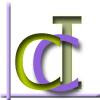Call Center Analytics : Past, Present and Future
12:12 AM
Posted by CCI - Call Centers India
 |
| Analyzing Data |
The Past
Call center analytics provide reports on how the team has performed in previous time periods. This might be last quarter, last month, or even last shift. This information can be used to gauge performance of the department as a whole, or broken out to analyze each team. Which teams are meeting their goals? Which shifts are being overloaded and which don't have enough work to do?
Past reports can be used to recognize high achievers, creating incentives for all teams to work harder. They can also be used to spot trouble areas so managers can brainstorm solutions. The information can be used to justify staff increases by demonstrating how average call volume is rising. These kinds of metrics have been available for many years, but increases in information technology offer other perspectives to today's call center managers.
The Present
Real time analytics tell both managers and agents how call volume is being handled right now. It allows the center to adjust to changing volumes quickly so customers aren't frustrated by long hold times during heavy traffic, and employees aren't twiddling their thumbs during slow periods.
A center might set up teams assigned to different call volumes. Team A might be on the phones all the time. Team B has other duties but automatically moves to cover the phones once the electronic wallboard shows call volume at moderate levels, returning to their other tasks when volume drops. Team C could be an emergency group who works the phone only during periods of very high traffic. In addition, managers could monitor the call center metrics and react to changing call volumes in real time.
The Future
The real power of call center analytics come in predicting call volume before it happens. Managers get a feel for call patterns and can plan future staffing accordingly. As a company becomes more successful and call volumes rise, the center can be expanded in anticipation of future growth rather than trying to hire after employees have become overworked.
Flexible staffing solutions might be implemented to cover expected fluctuations in call volume. When analytics show that the center is always busiest on Mondays, or in the afternoon, or in the first week of the month they can bring on extra staff to cover those expected increases. Managers could bring on additional help right before new product launches or in response to positive or negative publicity. Proactive decisions are more powerful than reactive ones.
This entry was posted on October 4, 2009 at 12:14 pm, and is filed under
call center analytics,
call center data metrics
. Follow any responses to this post through RSS. You can leave a response, or trackback from your own site.
Subscribe to:
Post Comments (Atom)


Post a Comment